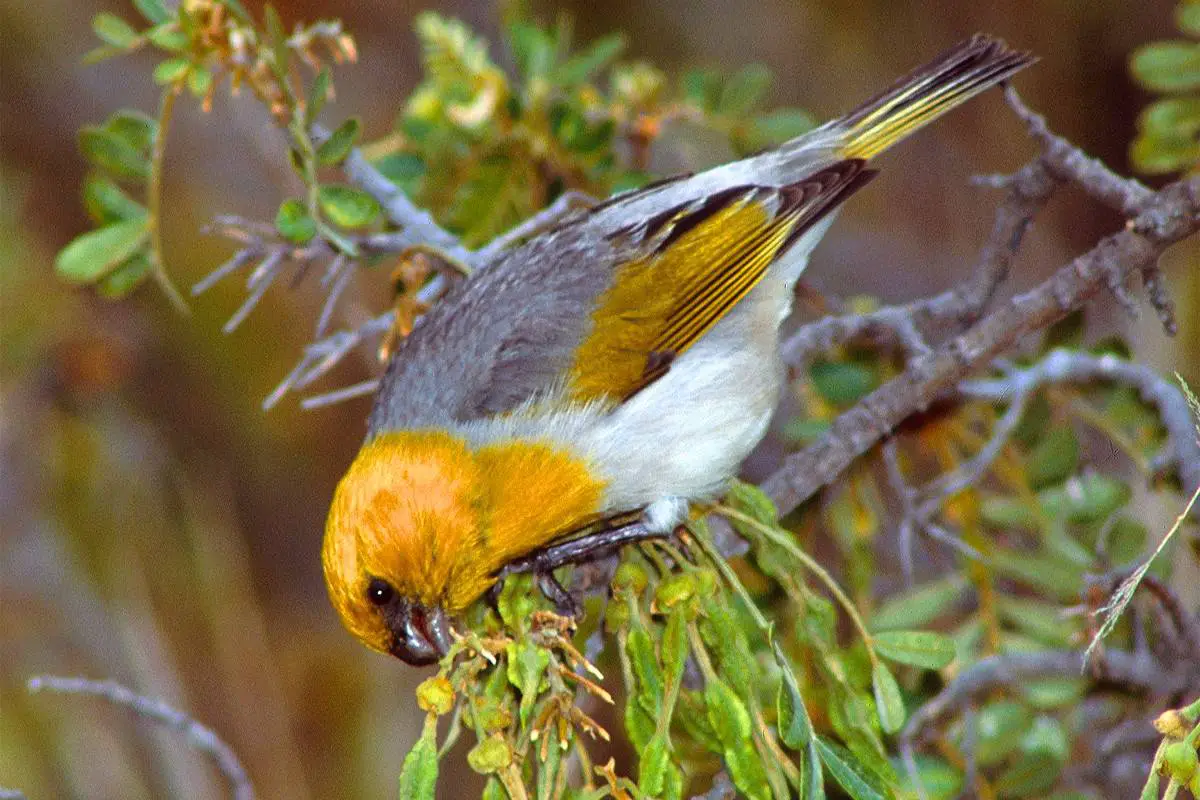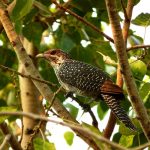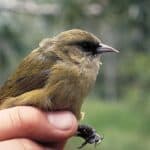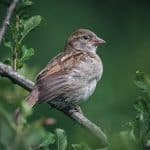Common Name: Palila
Scientific Name: (Loxioides bailleui)| Size | Diet | Range in Hawaii | Status in Hawaii |
|---|---|---|---|
| 6 in. | seeds | Big Island, | Critically Endangered |
The Palila (Loxioides bailleui) is a unique and fascinating bird species that is native to the Big Island of Hawaii. With its distinctive yellow head and striking black and white plumage, this bird is a beloved sight in its natural habitat. However, the species is facing a critical conservation status due to habitat loss and predation, making it a rare and precious sight for birdwatchers.
In this article, we’ll explore the fascinating world of the Palila, its unique adaptations, and behavior in the wild.
Palila
Appearance
With vibrant plumage and a graceful physique, measuring around 6 inches adds to its allure, making it a petite yet striking presence in the Hawaiian sky. It features gray plumage, a creamy-white belly, a black mask, and a touch of yellow near its beak. This avian beauty captivates observers.
Diet
The Palila has a specialized diet centered around the seeds of the māmane tree (Sophora chrysophylla). This small finch relies solely on these nutritious seeds, exhibiting a unique herbivorous feeding behavior. The Palila’s consumption of māmane seeds contributes to the tree’s reproduction while emphasizing the need for conservation due to habitat loss and limited food availability.
Nesting
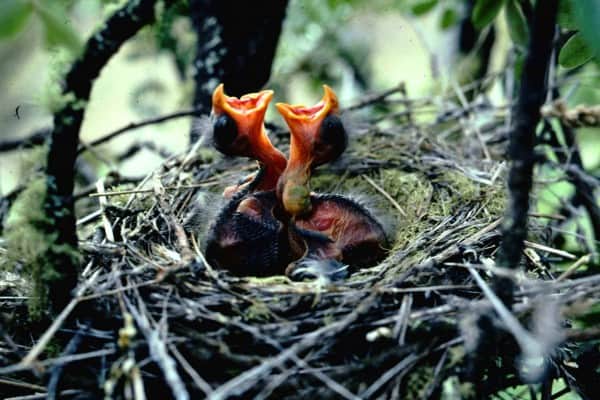
The Palila exhibits fascinating nesting behaviors that reflect its adaptation to the unique environment of the Hawaiian Islands. This small finch constructs its nests in the branches of the māmane tree, its primary habitat and food source.
The Palila’s nests are carefully crafted structures made of twigs, leaves, and grass, intricately woven together to provide a secure and cozy shelter for its eggs and hatchlings. These nests are typically positioned near the outer branches of the māmane tree, offering protection from predators and exposure to the elements.
What makes the Palila’s nesting behavior particularly intriguing is its preference for constructing multiple nests within a single breeding season. This behavior is known as “double brooding.” After successfully raising their first brood of chicks, the Palila pair will construct a new nest nearby and lay a second clutch of eggs, allowing for an extended breeding season.
The Palila’s nesting habits are closely intertwined with the availability of its primary food source, the māmane tree. As the tree produces seeds in cycles, the timing of the Palila’s breeding season is synchronized to coincide with the peak availability of māmane seeds. This ensures an ample food supply for the growing chicks during their critical development stages.
Behavior
One notable behavior of the Palila is its flocking tendency. These birds have a social nature and gather in small flocks, especially during foraging and breeding seasons. This flocking behavior not only provides protection against predators but also allows for collective feeding and communication.
During the breeding season, the Palila engages in elaborate courtship displays. Males may engage in aerial acrobatics, fluttering their wings and singing melodic songs to attract females. These displays serve as visual and auditory signals to establish dominance and attract potential mates.
The Palila’s vocalizations are another intriguing aspect of its behavior. These birds have a varied repertoire of calls, including soft chirps, trills, and melodic songs. Vocalizations play a crucial role in communication within the flock, signaling warnings, defending territory, and maintaining social cohesion.
Habitat
The Palila’s specialized habitat revolves around the māmane tree, providing food and nesting sites. This specialized environment, characterized by arid conditions and volcanic terrain, underscores the Palila’s resilience.
Range
Nestled within the enchanting realms of Hawaii’s Big Island, the palila reigns supreme in a captivating habitat. This endangered species calls the mamane/naio dry forest home, thriving amidst the lofty elevations of Mauna Kea. Delicate and exclusive, the palila’s range in Hawaii is a testament to the mesmerizing biodiversity found on this remarkable island.
Conservation Status
According to the International Union for Conservation of Nature (IUCN), the Palila is currently classified as critically endangered. This classification reflects the significant decline in its population and the severity of the threats it faces.
Interesting Facts
1. Bill evolution
The Palila’s bill is specialized for extracting seeds from māmane tree pods. The upper mandible of its bill is curved downward and is used to pry open the pods, while the lower mandible is shorter and thicker, allowing the bird to crush the seeds.
2. Impact of introduced species
The introduction of non-native predators, such as feral cats and rats, has had a significant impact on the Palila population. These predators prey on the birds and their eggs, further endangering the species.
3. Legal protection
The Palila is protected under the Endangered Species Act in the United States, which prohibits harming, harassing, or killing individuals of the species. Additionally, efforts are being made to restore and protect the māmane tree habitat on which the Palila depends.
4. Pollination Role
In addition to feeding on the seeds, the Palila plays an important role in the pollination of māmane trees. As they forage on the flowers for nectar, pollen sticks to their feathers, facilitating cross-pollination between trees.
5. Cultural significance
The Palila holds cultural significance for the native Hawaiian people. It is considered an ‘aumakua’ or ancestral guardian. The bird’s presence and well-being are intertwined with traditional Hawaiian cultural practices and beliefs.
Frequently Asked Questions
1. Can the Palila be kept as a pet?
No, the Palila is a protected species, and it is illegal to keep them as pets. They are best observed and appreciated in their natural habitat.
2. Are there any success stories in Palila conservation?
While the Palila still faces significant challenges, conservation efforts have shown some positive results. Habitat restoration initiatives have helped improve conditions for the Palila, and captive breeding programs have contributed to population stabilization.
3. How does climate change affect the Palila?
Climate change can have impacts on the Palila and its habitat. Rising temperatures and altered precipitation patterns could potentially affect the distribution and abundance of the māmane tree, the Palila’s primary food source, and nesting habitat.
4. How long do Palilas live?
The average lifespan of a Palila is estimated to be around 5 to 7 years in the wild. However, some individuals have been known to live up to 10 years or more.
5. Can Palilas fly long distances?
Palilas are capable of flying, but they are not known for undertaking long-distance flights. They primarily inhabit the slopes of Mauna Kea and have limited seasonal movements within their range.
